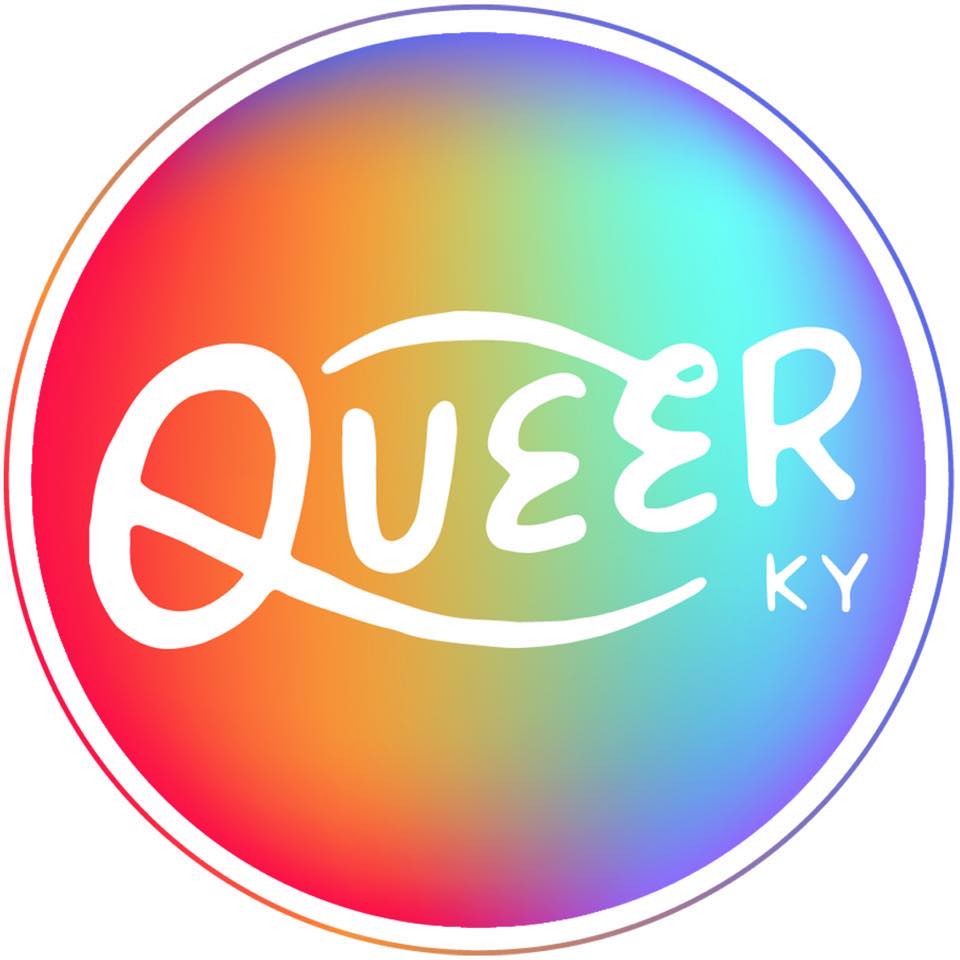

Louisville People’s Art Report First Look, an Open Letter
Thoughts On
Brianna Harlan
Louisville, Louisville art and culture scene, y’all,
In June 2020, I formed The Louisville People’s Art Report (LPAR): a community effort that builds and grows off of the labor and investment of volunteers. It was formed almost by accident when I started a public forum on Instagram. Protests for Breonna Taylor were active, tensions were high, and I became frustrated that so many institutions and individuals were posting support but refusing to look in the mirror at their own complicity. I asked questions about equity, racism, and sexism in Louisville’s arts and cultural sector. Narratives and data were captured more thoroughly through an online survey. What resulted was an overwhelming need to take an honest look at our institutions, gatekeepers, and habits. The LPAR is a call to action for the entire arts and culture community. This is not a call to participate, but a call to reclaim. Hosting this forum outside of an institution or grant process allows people to share with a level of honesty I had only heard behind closed doors or in quiet corners of arts spaces. And we, the people, are the ones that are responsible for demanding that we all do better.
The submission of over 250 surveys as well as the countless hours of donated qualitative analysis over the last months indicates that this is work people want to see happen. Collective care will be the only way our loads lighten enough to mediate the “I don’t have time or energy.” Many hands make light work! I often get messages asking when updates will be released and the simplest answer might be: when you help. Unless we can prioritize a long term goal alongside our short term needs, we will always be catching up to the present. If we don’t take ownership of our demands, we will always lose sight of their priority. The value of this community initiative is based in valuing community ownership. We make it; we shape it.
The importance of this work, at this point, is undeniable. When settled in the hands of gatekeepers, Louisville has been left with an arts and culture structure that perpetuates White supremacist conditions. No matter where your interests lie, every Louisvillian is affected by the city’s culture. Culture builds economy, notoriety, reputation, connection, education, and quality of life. If our culture as a city is being strangled by a top-down, out of touch approach, the concern must be shared by all of us. Those that drive the culture especially carry the weight of this concern. The survey submissions detail abuses of power, space, and relationships. There is hurt, pain, anger, and a sense of release. To let it go, to let this pass, is something past being complicit. To hear the statistics already released and to have done nothing in the meantime to begin equity work means you aren’t concerned enough. It is past time for lack of community concern to be treated as the violence it is.
But this isn’t a lecture. Here is the complete first look at the results:
Some selected hard data points. Yes/No questions.
- When you go to art openings, do you often see the city's diversity represented? 89.8% NO
- When you go to commercial art events and fairs, is the Black artist community fairly represented? 95.5% NO
- Can you name one Black led arts anything that gets major support from anyone but Black people? 76.6% NO
- Do you think it is common for arts institutions in Louisville to not pay all of their employees fairly. 88.7% YES
- Do you find sexism common in arts institutions in Louisville? 82.6% YES
- Do you find racism common in arts institutions in Louisville? 86.4% YES
- Do you think tokenizing minorities is a problem in the arts scene in Louisville? 92.8% YES
- Do you trust the leadership of the arts scene in Louisville to make ethical space for your work? 78.9% NO
These data points speak for themselves. But I will also speak. (I hope you speak).
To not see Black people at art events means, not only are Black people professionally locked out, but in Louisville––a city that has grappled with extreme segregation––the environment for Black people to be included in events, reviews, critical discussion has clearly not been developed. This indicates that discussion around art and culture is seen through and held in a White and colonizer lens. Black people (a handful with clout) are to be hired when you need some umph in your events, shows, and projects but they are not allowed to shape it. Are we still just your little entertainers, invited when we amuse or move you? Do you invite our voice but not our choice, our full vision and autonomy? Do you really want us in high attendance or “just enough” to pepper the room? This power and access structure is nasty. Violence. What have you done to address this?
To be locked out of commercial art events is to be locked out of self-sustained financial support for your work. It is to be barred from the market. In a country that makes the dollar a deity, to have a market that is set up for the inequitable participation of White artists is racist economics. Art likes to pretend that it is a higher form, more aware and constructive. The Art industries are the same as every other and we see you. What have you done to address this?
I’ll just repeat: can you name one Black led arts anything that gets major support from anyone but Black people? 76.6% NO
This is a show of negligence that can not be blamed on gatekeeping. When someone excels despite barriers and the art community isn’t showing up, it demonstrates our values. So is it the gatekeeping you have an issue with or is your concern just with your own struggle? For the Black community, the lack of support from the powers that be is one thing but to watch peers, artists, and communities that claim to care, never put care into practice is infuriating. If you don’t care about Black people and equity enough to show up, you don’t care. If you’re taking projects that you have no business taking in Black communities, you don’t care. If you complain about the art power players and decision-makers but only consider yourself when you apply for and accept projects, you are self-serving and liberation and equity are not your goals.
Racism, sexism, tokenism are rampant in Louisville’s arts and culture scene. Violence. What have you done to address this?
The trend found is that each concern is directly tied to the fact that the Louisville Arts and Culture scene still operates on a White supremacist foundation with oppression and violence happening most apparently at the intersections of:
- Racism and Anti-Blackness
- Sexism
- Homophobia/Transphobia
- Xenophobia
- Gatekeeping
- Ableism
The realities fueling this are:
- Lack of Equitable Representation
- Worshipping the Dollar
- Violent Leadership
- Collective Habits
The Lousiville People’s Art Report will dig into the specifics, explanations, and examples of how this plays out in our community: institutional reinforcement and collective complicity. Next steps for discussing results, as well as shaping demands and action, will be outlined. Black, POC, and Indigenous arts and culture efforts will be highlighted. Look forward to opportunities to join in this work by the end of the year. Our collective habits are a top cause for current conditions.
If we don’t trust the leadership to make equitable space, it’s time to stop following them. It is time to stop asking them. It is time for demands. We determine the values for our community. Louisville is small enough that arts laborers can face severe consequences for whistleblowing. How can we be preemptive about setting the standards for equitable practice? How can we create methods of discerning who is doing the work and who isn’t? White supremacy isn’t sustainable. It’s violent, greedy, and parasitic. This is about the betterment and securing of our future. Culture plays a big part.
Because I'm unaffiliated with any arts group or effort, the LPAR can make private conversations around these institutions public (anonymously). Since the only thing published is results instead of names, we can keep the focus where it should be. We aren’t here to argue individual grievances, but collective and systemic ones. There will be methods that grow out of this process but that condition––of community members doing this work for each other and not depending on broken structures to hear us––is essential to it. For follow up in the future, I am thinking of tools like digital checklists that can be filled out quarterly each year. This would be a quick, comprehensive form to keep the public conversation active around the report’s findings. The tools will adjust as the Louisville People’s Art Report responds to what the community is saying. I hope that, with Louisville finally discussing these wrongs openly, the following list will shrink as this work makes room for us to confront the wrongs together and finally see the bigger picture.
The following institutions were named in the anonymous survey responses. This means they, in one or more instances, contributed to the previously named themes as reported by a community member. They are in no particular order except the top 5 most frequently mentioned, named first in bold.
- The Speed Art Museum
- KMAC Museum
- Fund for the Arts
- University of Louisville
- Actors Theatre of Louisville
- IDEAS xLab
- houseguest gallery
- Great Meadows Foundation
- 21c Museum Hotel Louisville and Proof On Main
- Ruckus
- Art Sanctuary
- Louisville Visual Art
- The Kentucky Center for the Performing Arts
- Bellarmine University
- Mellwood Art Center
- Tim Faulkner Gallery
- Garner Narrative
- Moremen Gallery
- Swanson Contemporary
- Louisville Public Media
- Hite Art Institute (UofL)
- Revelry Boutique + Gallery
- Forecastle Festival
- Louisville's General Art Culture
- CenterStage at the Jewish Community Center
- The Frazier History Museum
- NuLu: Galleries on Market Street
- Carnegie Center for Art & History
- Solid Light, Inc.
- Cressman Center for Visual Arts
- Louisville Grows
- Louisville Ballet
- Herron School of Art and Design (Indianapolis)
- The Voice-Tribune
- Kore Gallery
- Louisville Film Society
- The Filson Historical Society
- ELEVATOR Artist Resource
- The Green Building Gallery
- Ohio Valley Creative Energy
- Louisville Assembly of Vanguard Art (LAVA Art Collective)
- Talent Agencies (General)
- duPont Manual High School
- Zephyr Gallery
- Center For Neighborhoods
- Comedy Caravan
- Commonwealth Theatre Center
- The Commission on Public Art
- Fairgrounds Arts Fairs and Festivals
- Kentucky Science Center
- Surface Noise
- Headliners Music Hall
- Kaiju
- Kentucky Shakespeare
- Kentucky Derby Museum
- Jefferson County Public Schools
- Kentucky Opera
- Bourbon Baroque
- The Louisville Orchestra
- Louisville Philharmonia
- Louisville Chamber Choir
- LEO Weekly
- Lettersong Calligraphy Studio & Gallery
- Louisville Metro Government & The Fischer Administration
- Pandora Productions
- ACC
- UofL Department of Theatre Arts
- Stage One Family Theatre
I would like to note that many of the top five most mentioned are large institutions that hold power. This both gives them more responsibility and more opportunity to mismanage that power. That is to ask them to do better but it is also to remind other arts efforts that not being in the top five most mentioned, or excluded from this list entirely, does not exempt you from this work. If you had more power and took up more space, would the increased reports on your activity say much better? Would yours be an example of an equitable model? Is it now at current size? We can all do better. We should always be learning. Y’all, have eyes wide open for the report and also: please prepare a budget to hire me if you want consulting or even a “conversation.” This report is already several thousands of dollars of labor, donated. This free report is a gift. Do not take advantage. This is about equity. We start here.
Louisville Peoples Art community, this not a call to participate, but a call to reclaim. Remember, the LPAR itself is a tool. From it, we can push our voice to demand better. Through action, we will make it happen.
Y’all stay safe from Rona (COVID-19).
Let’s do some work,
Brianna
-
Next Steps:
- Sign up for LPAR email updates: https://forms.gle/EeNCDyE4SYBWkQxC7
- Social media updates: instagram @_briannaharlan
- The links below will allow you to add 3 words for your priorities and 3 words for your desired values as they pertain to this work.
- Priorities https://www.menti.com/5n1qtwy314
- Values https://www.menti.com/av8q2vhcui
- Donate to the work, venmo: @BlackLoveBlooms; paypal: briharlan@outlook.com
-
11.26.20
Brianna Harlan (Louisville, KY) is an artist and creative interventionist. She is receiving her MFA in art and social action at Queens College and working as a program coordinator for a diversity, equity, and inclusion incubator for City University of New York.

Louisville Peoples Art Report Logo
Featured in Art of Gravity, ep. 01.







